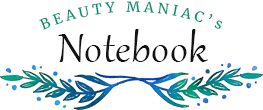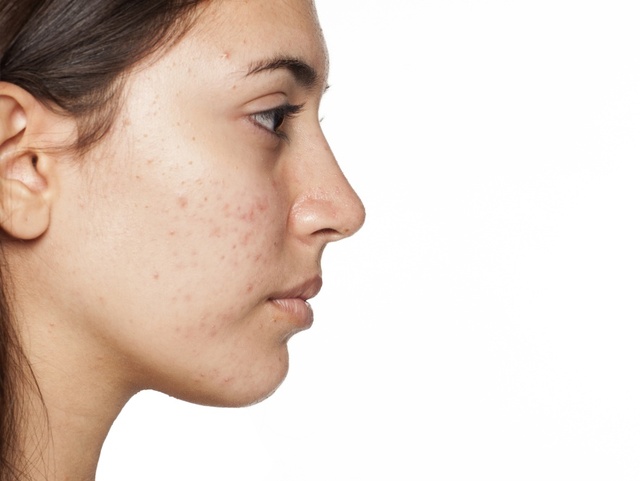Proper care delivered to acne and oily skin type is the essential element of effective anti-acne treatment. The cosmetics designed for problematic skin care are supposed to help cure acne and alleviate its symptoms. In many cases taking care of skin with the aid of well-matched cosmetics suffice to notice a significant condition improvement. Sadly, there isn’t such thing like an universal solution: When gentle preparations soothe sensitive and irritation-prone skin, the more powerful products contain comedolytic substances that break blackheads. A type of applied cosmetics is as important as their composition. Which products do I recommend to deal with acne and excessive sebum production? What ingredients should the cosmetics contain? How acne and oily skin care should look like?
Types of cosmetics fighting acne and seborrhoea
Daily acne and oily skin type care consists of a few stages and this equals using several beauty products. Naturally, it would be best if all the cosmetics belong to one series since this enhances their action. Moreover, they have to be applied in the right order, as often as it is recommended by the producer.
There are the following types of cosmetics distinguished to deal with acne and seborrhoea:
- cleansing cosmetics
You should apply them twice a day. They are supposed to remove dirt and excess of sebum, unclogging skin pores as well as restore the bacterial and sebum balance. In order to clean acne and oily skin face, go for anti-bacterial micellar lotions, gels and emulsions designed for this very skin type. They can’t contain alcohol which isn’t only unable to improve skin condition but also it contributes to even greater dehydration and irritation; - exfoliating scrubs
Keep using them twice or three times per week. Their task is to remove dead skin cells as well as unclog and reduce visibility of skin pores; - bacteriostatic cosmetics
They are recommended to treat comedones as well as pustules (pimples). If you are affected by this form of acne, keep applying bacteriostatic cosmetics morning and evening after cleansing your face precisely. Such products slow down bacteria multiplication. As a consequence, they prevent acne from spreading as well as exfoliate dead epidermis cells and unclog skin pores; - skin normalising toners
Apply them twice a day before putting on a cream. Thanks to this you will help balance your skin pH, reduce visibility of skin pores and handle sebum production (limit it); - day creams
Their task is to maintain the hydro-lipid barrier of epidermis. If well-matched, a day cream moisturises skin which directly leads to fixing the skin hydration problem. Also, such cream soothes irritations, mattifies, restores the beneficial bacterial flora, limits excessive skin hornification and regulates work of sebaceous glands; - night creams
They are richer in active biological substances than day creams. Also, they display a different type of action since they exfoliate epidermis, reduce visibility of acne and balance sebum production. Moreover, they smooth out skin and even skin tone. Finally, they are able to unclog, clean and minimize skin pores; - skin masks
You can apply them twice or three times a week. In most cases they have the form either of thick emulsion or paste. In short, they cake on skin creating a coat which substances penetrate skin deeply so as to make it clean and smooth; - products applied topically
They are designed to be applied only to acne. They deliver soothing action, dry out acne and accelerate skin regenerating processes.
Cosmetics fighting acne and seborrhoea: Ingredients
Products designed for treating acne and oily skin type have to fulfil a few tasks at the same time. For that reason they feature blends of substances that don’t only mattify skin and balance sebum production but also moisturise and regenerate it. Most cosmetics of this type should have astringent features and fight back bacteria. The most popular and the most effective ingredients are:
- lactic acid (alpha-hydroxy acid) – exfoliates, disinfects and prevents bacteria multiplication;
- glycolic acid (hydroxyacetic acid) – displays dead skin cells exfoliating action;
- mandelic acid – displays strong antiseptic action, removes epidermis gently and limits seborrhoea;
- salicylic acid – exfoliates. It penetrates through sebum layer to reach the deeper skin layers where it unclogs sebaceous glands outlets, cleanses skin pores, reduces blackheads as well as works antibacterial and anti-inflammatory;
- benzoyl peroxide – exfoliates epidermis, unclogs skin pores and handles seborrhoea. Moreover, it slows down bacteria multiplication that is responsible for acne appearance;
- retinoids – derivatives of vitamin A. They unclog skin pores and decongest sebaceous glands, exfoliate epidermis and prevent bacteria from multiplying. The effect they deliver depends on their form and concentration. Retinol palmitate, retinol and retinaldehyde displays relatively gentle action, whereas tretinoin, isotretinoin, tazarotene and adapalene are considered as more effective, yet they can over-dry the skin and leave it irritated;
- sulphur – displays antiseptic and anti-inflammatory action. Also, it regulates work of sebaceous glands, reduces visibility of skin pores and leaves skin matte;
- camphor – displays anti-inflammatory action, exfoliates gently, reduces seborrhoea and minimizes skin pores;
- EFA (Essential Fatty Acids, which are: linoleic, linolenic and arachidonic acids) – combat bacteria multiplication responsible for acne appearance;
- kaolin – clay displaying strong sebum-absorbing action that eliminates bacteria. It also cleanses and closes skin pores;
- propolis – it contains, among others, flavonoids, vitamins, organic acids, proteins, enzymes and amino acids. Moreover, it works antiseptic, prevents excessive sebum production ad regenerates skin;
- essential oils (e.g. rosemary, lemon, bergamot, juniper, thyme and lavender oil) – deliver antiseptic and antifungal action, reduce inflammations and sebum production. Also, they combat blackheads.
What products fighting acne and seborrhoea would you recommend? What substances should they contain? Leave comments below!



Leave a Reply